



Now that you know how to define the help desk ticketing process flow from our previous article, Ticketing platform for ISP, follow these best practices to ensure your support department is on solid ground while providing top-level customer service.
Any effort to streamline workflow won’t work without the automation of routine processes, and ticketing is no exception. Here at bases lies a simple premise: employees don’t need to do repetitive tasks manually. This simple principle helps reduce the workload for the whole team and the number of individual mistakes made by each team member, freeing up valuable human resources to focus on higher-value activities. You can also save up to 50% on business costs associated with manual processing.

Splynx Ticketing Platform has certain features to help with this process. More specifically, the basic steps to configure it are as follows:
Think of the Impact-Urgency Matrix as your prioritization guide. It helps you sort tasks by importance and deadlines so you know what to tackle first. This matrix ensures that urgent, high-impact tasks get immediate attention while less critical tasks wait without disrupting your workflow. It prevents emergencies from slipping through the cracks and helps you manage everyday challenges without derailing your schedule.
Priority classification typically follows a 1-4 scale, noted as “P𝒳.”
Keeping agents motivated can be a struggle in itself; we know this very well. The good news is that you can do something about it. Everyone (ok, almost everyone) loves games and spends a lot of time on them outside of work. Thus, implementing a gamification strategy can be a great way to use this in your favor and encourage your team. It can boost the productivity of your service desk team and improve customer experience.
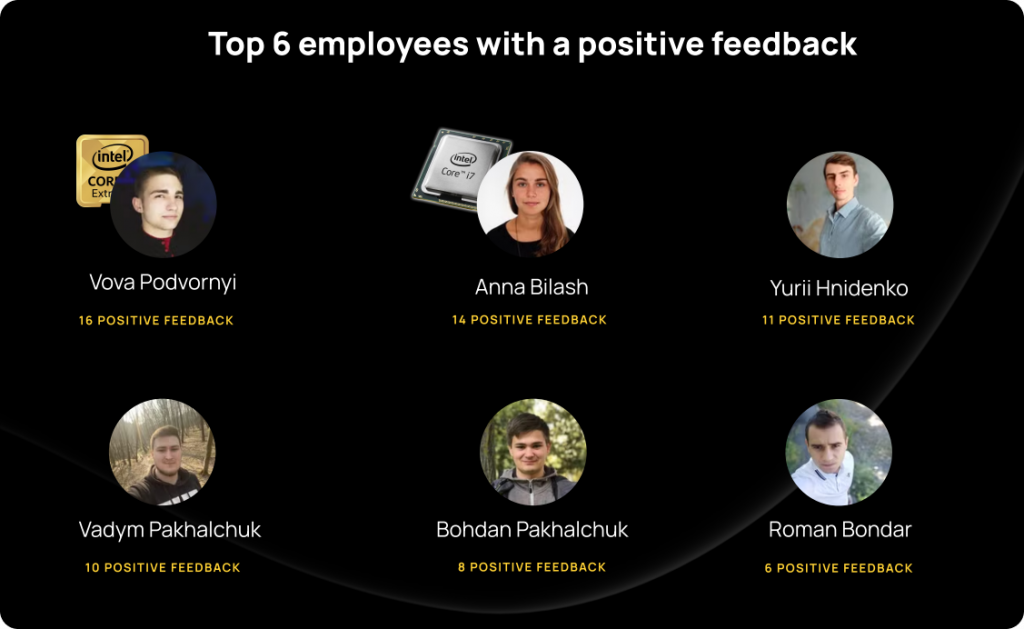
You can create a points-based system that rewards your support engineers by analyzing key metrics such as response times, ticket resolution, and customer feedback. For example, each resolved ticket could earn virtual points that accumulate towards bonuses, or agents could compete on a leaderboard. Special custom badges can also be awarded for specific achievements, like consistently high ratings or quick resolution times, allowing you to recognize and celebrate top performers and foster healthy competition.
Self-service is nothing new. We’re all used to helping ourselves, whether it’s shopping, banking or something other. And in ISP industry, self-service (known as tier 0 of the five IT support levels) isn’t just a nice-to-have anymore — it’s something users expect. People don’t want (or expect) to wait on hold for a support agent, to become available if there’s an issue they could resolve themselves.
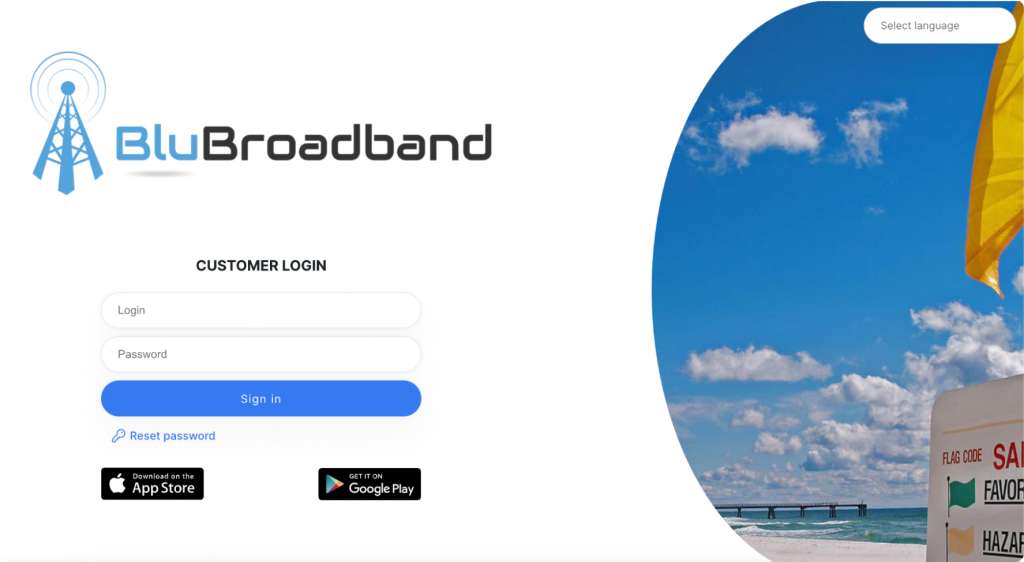
That’s where a self-service portal comes in. It provides users with quick access to information and resources to solve their problems and access the services they need quickly and efficiently. This, in turn, reduces the number of submitted tickets. It’s a win-win for both administrators and customers.
With a self-service portal, customers can access support whenever needed, even outside of regular working hours. This boosts user experience and satisfaction, as they can resolve issues independently. Meanwhile, help desk agents are freed from handling common queries that could easily be solved with a knowledge base article, allowing them to focus on more complex tasks that require their expertise. This approach helps maintain efficiency and service quality, even when operating under tighter budgets.
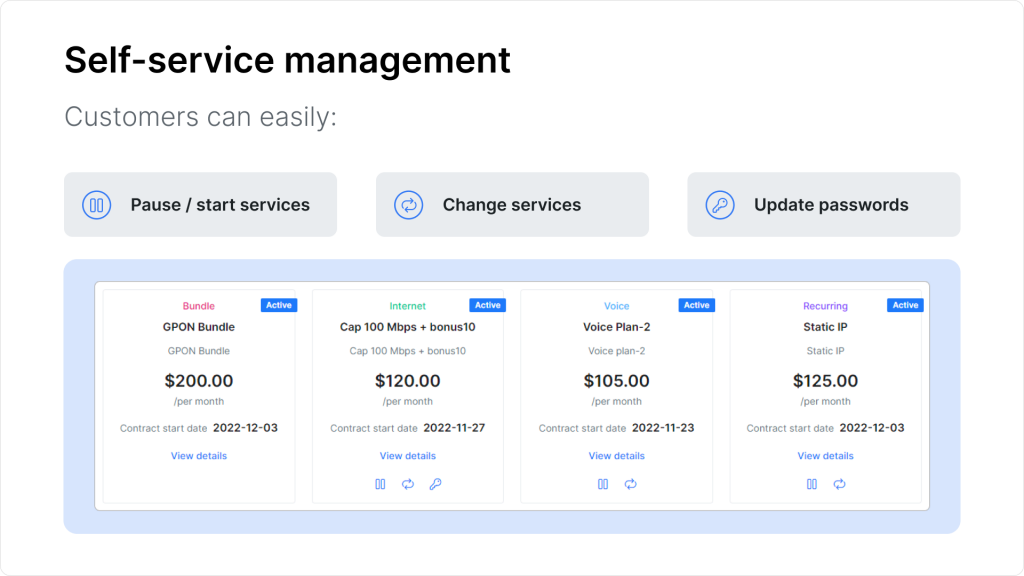
Within Splynx’s Customer portal and Customer Portal Mobile App, customers can conveniently access and review their account details through an informative dashboard: balance, current services, plan details, usage, CAPs, and billing updates. This helps customers understand what they are paying for and how to access, pause, or order a new service, enhancing self-service management across various devices. Сustomizability here is one of the key advantages, with ISPs can tailor the portal’s widgets to align with their brand identity, fostering a consistent and branded user experience.
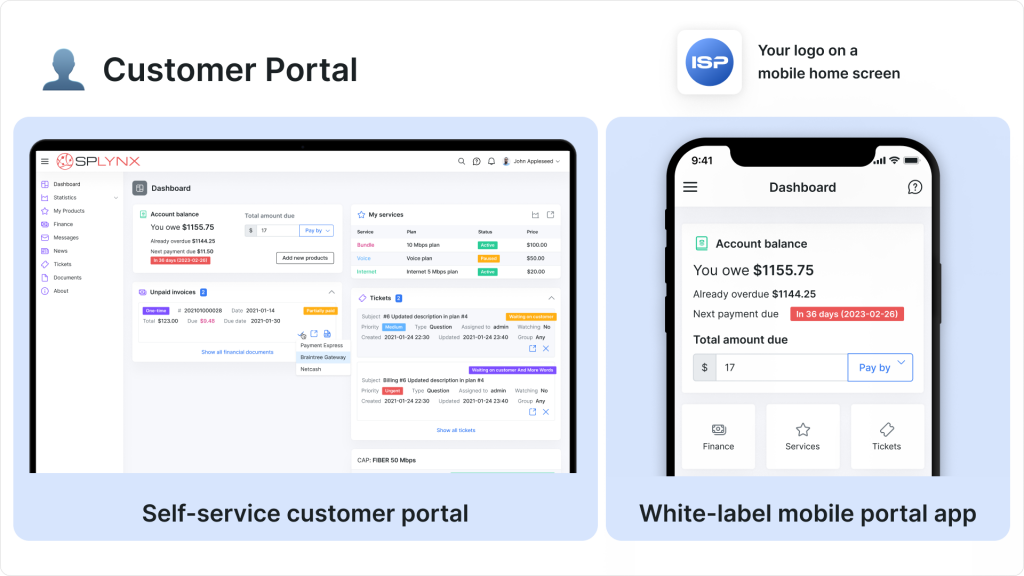
Additionally, the Customer Portal Mobile App offers the possibility of white-labeling the login screen and customizing the home screen icon with a recognizable brand ISP logo. Here, you can read more about our new overhauled mobile app, which acts as a customized mobile self-service client portal for ISPs of any size.
Another way to create valuable content is to develop a Knowledge base with articles, videos, and infographics that provide step-by-step instructions on using your services or troubleshooting common problems. Your best friends here are an easy navigation menu and search bar built on the natural language.
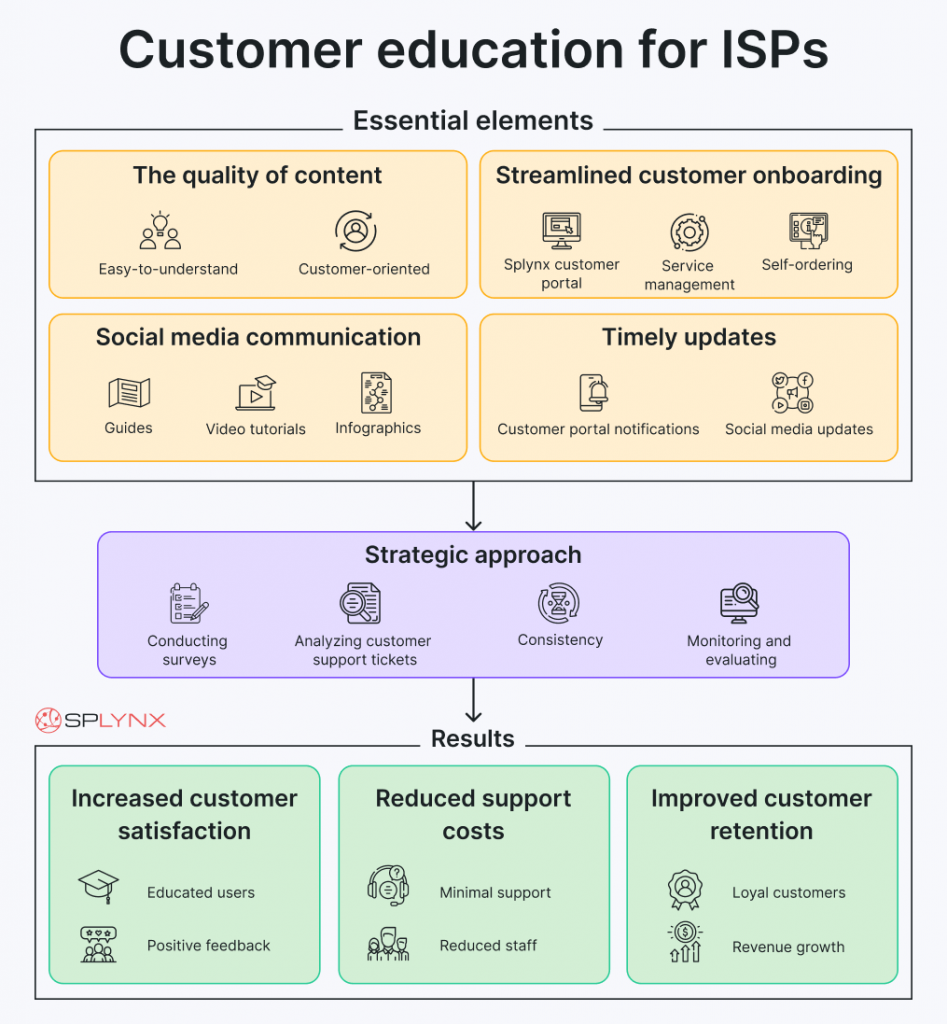
Plus, well-thought-out FAQs and Customer Education can help a lot with self-troubleshooting common problems, reduce the number of support tickets your team receives, and improve customer satisfaction. An effective customer education program includes five essential elements that ISPs must incorporate. You can learn more about how to organize everything in our detailed guide.
Okay, you’ve probably understood it by now, but we can’t emphasize enough the importance of continual improvement. This is probably the most common mistake with a ticketing process flow and the most important challenge, mainly because it’s difficult to find the time amid everyday tasks.
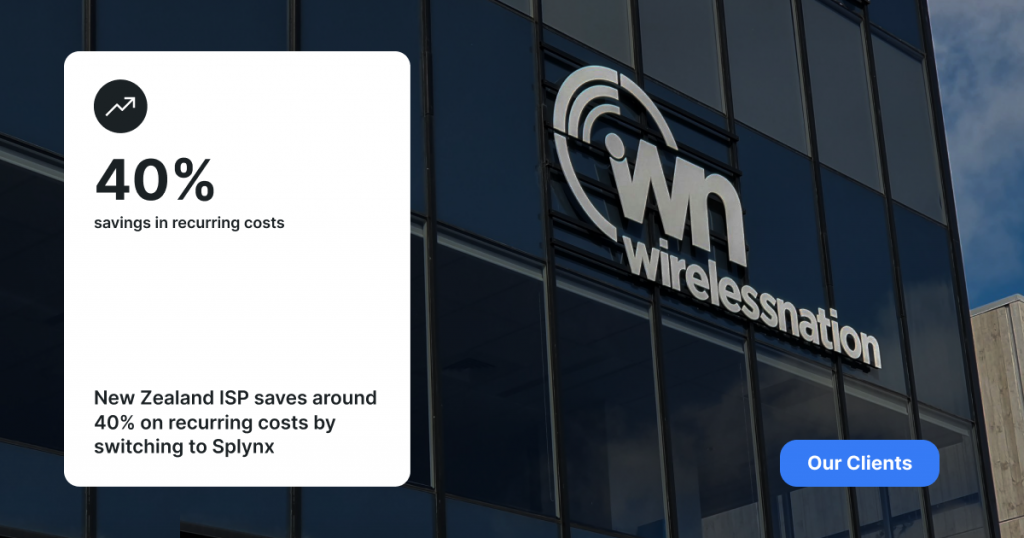
Even if your initial setup works accordingly and there have been no significant changes in the scope of services, the stakeholders will always be gradually changing. And you have to keep a close eye on all of this. Your team will get better at what they’re doing; your customer base may be subject to modifications, or they may become more aware of your products or services.
So, make sure to include data analysis (from the Ticket Lifecycle and Cost of Support reports, for example) into your regular activities as a help desk manager to spot areas for improvement and, ultimately, adopt a proactive approach to your support! Focus on using the Lean Six Sigma approach and prioritize the customer’s voice when creating reports or correcting inefficiencies.
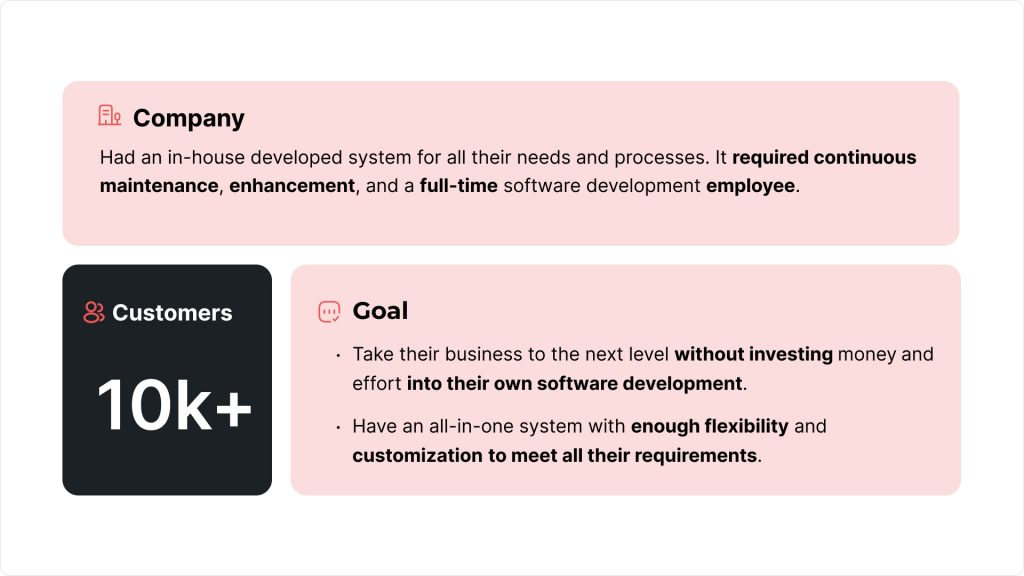
Our team boosts client success by delivering custom solutions tailored to specific needs. For instance, a major New Zealand provider, Wireless Nation, required unique adaptations due to their established processes. Switching to Splynx software was only possible by developing custom modules. Splynx has completed over 25 customizations and modules, saving around 40% in costs compared to their in-house developed system. This customization allowed Wireless Nation to meet all its operational requirements while transitioning to a more efficient system.
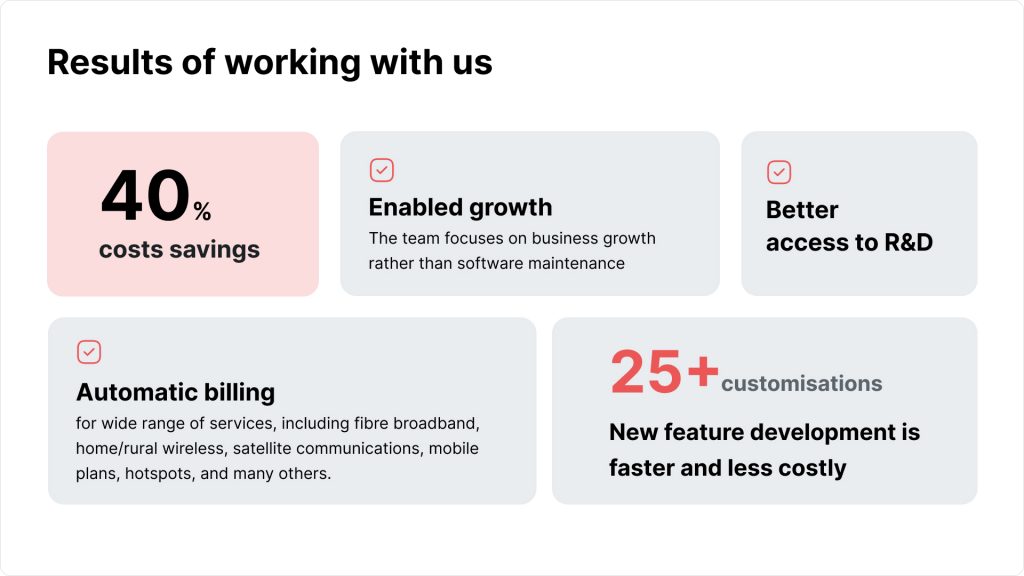
Migrating all their customers and business processes to the Splynx platform took one month. Splynx has completed over 25 customizations and modules, saving around 40% in costs compared to their in-house developed system. Read their whole success story here.
One of Splynx’s core principles is to stay flexible and go hand-in-hand with new technologies that sprout up every time. Our internal team of 30+ developers in 4 departments is responsible for product core features, new features, add-ons and mobile apps, and custom development. We also have a team of professional QA engineers who perform comprehensive testing and code reviews. They utilize automated tests (unit, integration, and acceptance testing) and manual tests based on predefined cases or scenarios to ensure software functions as expected. So, by choosing Splynx, you will access a solution that consistently meets market demand and can be confident that it won’t become stagnant or outdated over time.
A dynamic help desk ticketing platform is the backbone of efficient customer support. Clear workflows resolve issues faster, and both agents and customers are happier.
With Splynx, you can automate repetitive routine tasks and reduce manual ticket handling. Your support team will thank you as they have more room to focus on what truly matters. If you want to elevate your support, start your 15-day free trial with Splynx and see the difference firsthand.
Find out how Splynx helps ISPs grow
Learn more